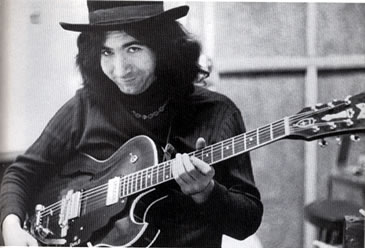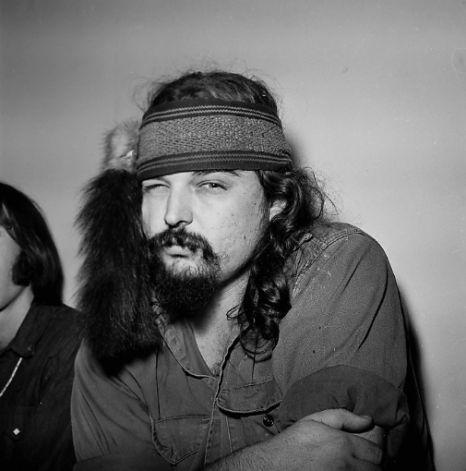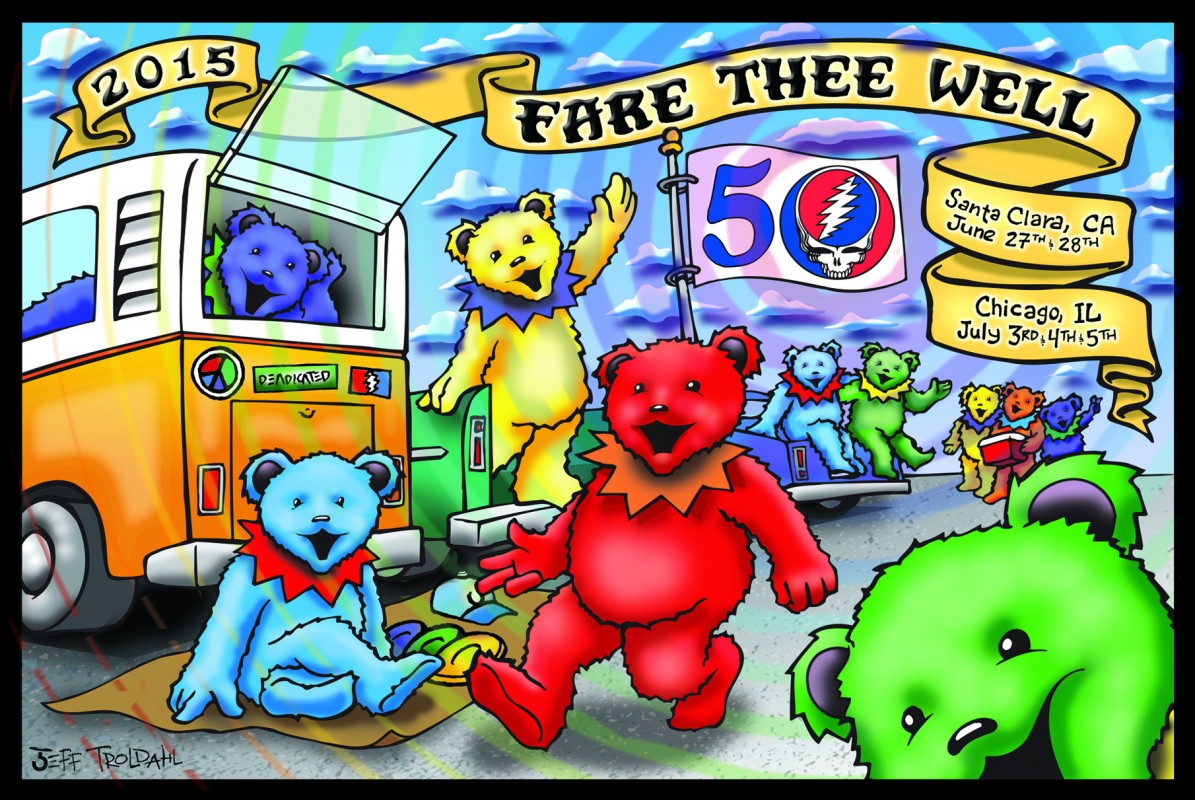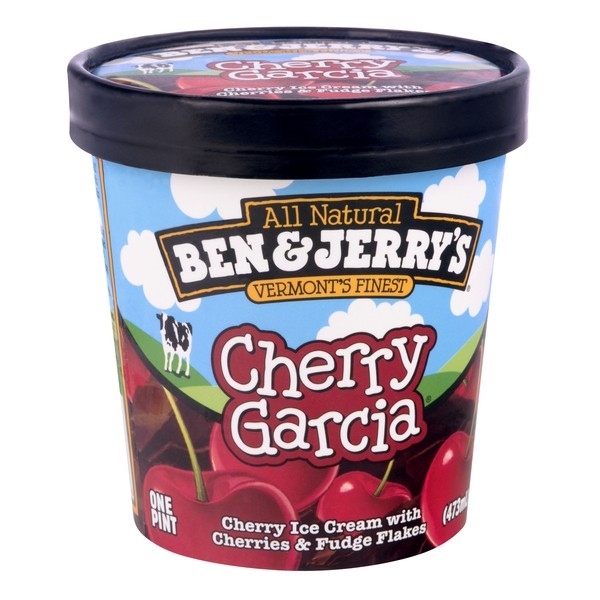Here are some Interesting and less known facts about Grateful Dead Band
1- It was unlikely the Grateful Dead existed at all: “I learned how weirdly miraculous it was that this band even came together,” Browne says. “In researching their backgrounds you learn how different they were from each other, both in terms of their personalities and musical backgrounds: You had Phil Lesh who didn’t like rock ‘n’ roll; you had Jerry who came from a folk/bluegrass background; you had Bob Weir who was kind of a preppy kid into folk music; and [Bill] Kreutzmann who was a jazz drummer. Some of them hadn’t even played electric instruments until they were the Warlocks. You throw them all together in a room and you think, ‘How in the world did this happen?’ You realize how haphazard a band it was on every level and yet it worked for 30 years.”
2- The band’s concert on August 27, 1972 in Veneta, Oregon, is considered to be one of the very best concerts in the band’s long history.
The Dead threw a benefit show for the Springfield Creamery in Springfield, Oregon. Tickets were printed on the backs of the Creamery’s yogurt labels. It was one of the hottest days of the year, and mostly everybody was naked. A film and audio recording of this show is finally being released as SUNSHINE DAYDREAM and is available at the band’s official website, dead.net.
3- In his early years, Jerry Garcia harbored a sense of fatalism: “That was something I didn’t know about going into writing the book and I didn’t know until I interviewed his girlfriend at the time,” Browne says of an evening Garcia spent with his then-girlfriend during the Cuban Missile Crisis thinking the world was about to end. “That one night is something that hadn’t come up in any previous book. It was an example of something that informed my sense of the way Jerry could look at the world. He’d already by that point been through a lot of changes and a lot of setbacks. He’d seen, most dramatically through the death of his father, how the world could change on a dime. And the Cuban Missile Crisis was another example of that. Obviously the world didn’t end on a dime then, but I think moments like that led him to think that you might as well just live in the moment because it could all go away at any minute. And you see that throughout his life.”
4- The Grateful Dead’s 1974 “Wall of Sound” weighed 75 tons.
The enormous public address system consisted of 26,400 watts of audio power, and 604 total speakers. The made for a very loud, concert. In fact, it was the largest concert sound system built at that time!
5- The legendary “Acid Test” scene was surprisingly small: “It was such a small little scene at that moment,” Browne says. “We think back now to Ken Kesey and the Merry Pranksters world and the influence that it had going forward from that point.” Browne focuses on one particular “Acid Test,” occurring on December 18, 1965, in an industrial building off Highway 101 in Palo Alto. “When you re-create a scene like that,” he continues, “you realize you’re talking about, I dunno, a couple of dozen people in a little closed space out in the middle of nowhere off of a highway. There had been Acid Tests before and some afterwards, but I thought that one was a particularly vivid one to write about. So many characters in the Grateful Dead’s lives who would inform them later were there—from Mountain Girl to Phil’s girlfriend, Rosie, to the Pranksters. It was a unique mixture of people. It was a tightly-knit world and off the radar at that point. Here you have these people doing LSD in public, more or less and sure, cops stopped by but they didn’t even go in. It was an eye-opener of how open the society was at that moment. How did they get away with that? You could maybe compare it to a modern-day EDM festival. It was kind of freaky.”
6- Sure, they did drugs, but the Dead weren’t just fun-loving hippies: “There was nothing flower power about the Dead,” Browne says. “They were a pretty badass organization. It was a pretty tough, hardened world. It was not all group hugs and sunshine daydream.”
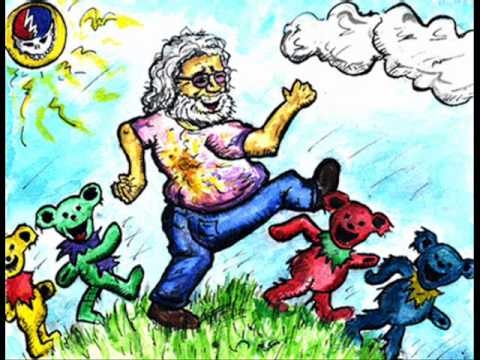
7-The “Twilight Zone” featured theme music by the Grateful Dead.
What band could be more appropriate for creating the eerie Opening and Closing Credits songs for the 1980’s revival of the classic series?
8- Ron “Pigpen” McKernan was the early face of the band: “I learned a lot about him and his personality,” Browne says. “The thing that came through repeatedly was how he was diametrically opposed to his image. He was the guy who looked like the biker and looked like the Hell’s Angel in the band but he from all accounts was this very sweet, shy, vulnerable guy who felt his father didn’t approve of his choice of careers and tended to kind of keep to himself. And yet onstage he really was the commanding figure in that band, not Jerry. It’s easy to forget that after all this time. He was the one with the most distinctive voice. It wasn’t his band in any way but he provided the anchor. He had a bedrock of blues and R&B songs that he loved and played and they were the songs that keep the band grounded. And then they built from there, improvised and swirled around that. He was such a crucial part of that band. It’s not surprising that after he died in ’73 Jerry thought, ‘We’re not the Dead anymore.'”
9- A cardboard cut-out of Jerry Garcia attended the Grateful Dead’s Rock & Roll Hall of Fame induction instead of the real Jerry.
In 1994, the Dead frontman decided not to attend the band’s induction into the Rock and Roll Hall of Fame. The other band members brought a cardboard cut-out of Garcia instead.
10- The Dead were an early adopter of the fan mailing list: “I learned so many fascinating things from people who worked for them,” Browne says. “At their shows they would set up tables and have fans fill out postcards and they would build this mailing list, this primitive database right there at their shows. It was brilliant in a way. They started sending out a newsletter. I talked to one Deadhead who subscribed and he still talks with wonder about getting this thing periodically in the mail, a couple pages long, written in their voice. Nobody was doing that. These were like early tweets. It wasn’t a super-calculated effort to become more popular. They had their eye on the prize. For all of their freewheeling chaos of their music and sometimes their lives, they could be a really organized machine when they had to be.”
11- Originally a foursome, they seamlessly integrated others into the band: “It was fascinating the way they would bring people in the band in such a casual way,” Browne explains. “Mickey Hart just started jamming with them and the next thing you know he’s in the band; when Pigpen’s health is waning Donna [Godchaux] approaches Jerry at a club show and says, ‘My husband should be your piano player.’ Suddenly Keith [Godchaux] is in the band. It was kind of organic and loose in that way. Also, it worked out really well: Each of those people was able to expand the band’s sound to fit the times. Keith’s piano playing kind of brightened their sound and made it a little more accessible in the ’70s. And certainly Brent [Mydland], and the way he would bring in synthesizers and a more pop sound, was a perfect way to become more of a modern ’80s band. He really revitalized that band; they were becoming sluggish. He was a link to the future. Even Bruce Hornsby afterwards had his own kind of polish that he brought to it.”
12-The years leading up to Jerry’s death were brutal for the Dead: “People look back on that era with very mixed feelings,” Browne says. “On one hand thinking they should have done more to help Jerry out but at the same time admitting they weren’t sure what they could do. People who worked in their office were saying they should have come up with a better plan to take a break. I think there’s a lot of debate about whether or not they should have shut down the operation for six months or a year. But in talking to one of their business employees I learned their monthly nut was $750,000 between salaries, insurance, etc. That’s a huge amount of money. There’s this sense that if they had shut down all these people that were almost like family members would be out of work and wouldn’t be able to pay their rents or feed their kids. It rammed home the pressures that Jerry must have felt. No one looks back on that period with any fondness. I think people look back at a lot of missed opportunities to right the ship.”
13-Ben & Jerry’s “Cherry Garcia” ice cream flavor was suggested by Dead fans.
It’s also the first ice cream named after a rock legend.
14-The band’s live version of “Dark Star” could run as long as 48 minutes.
That’s longer than some bands’ LPs. The single version of “Dark Star” ran 2 minutes and 40 seconds.
Sources : https://www.esquire.com/entertainment/music/a34665/grateful-dead-facts/
https://www.buzzfeed.com/johnnyr6/10-amazing-things-you-never-knew-about-the-gratefu-arl4

